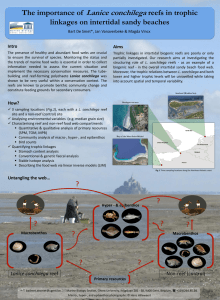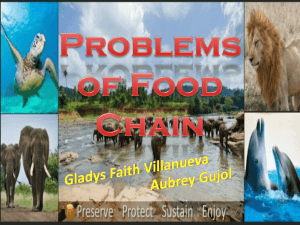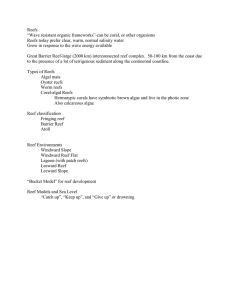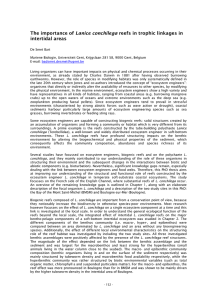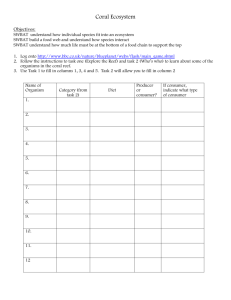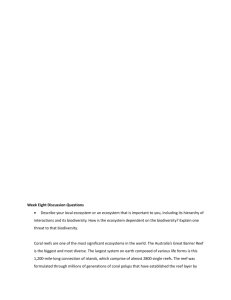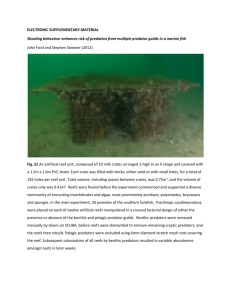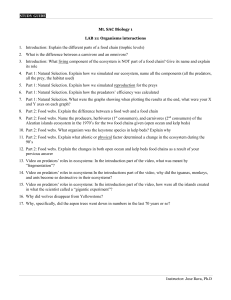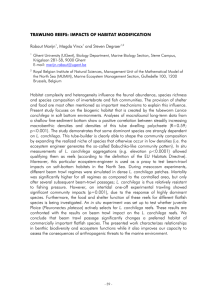Lanice conchilega bottom intertidal areas
advertisement
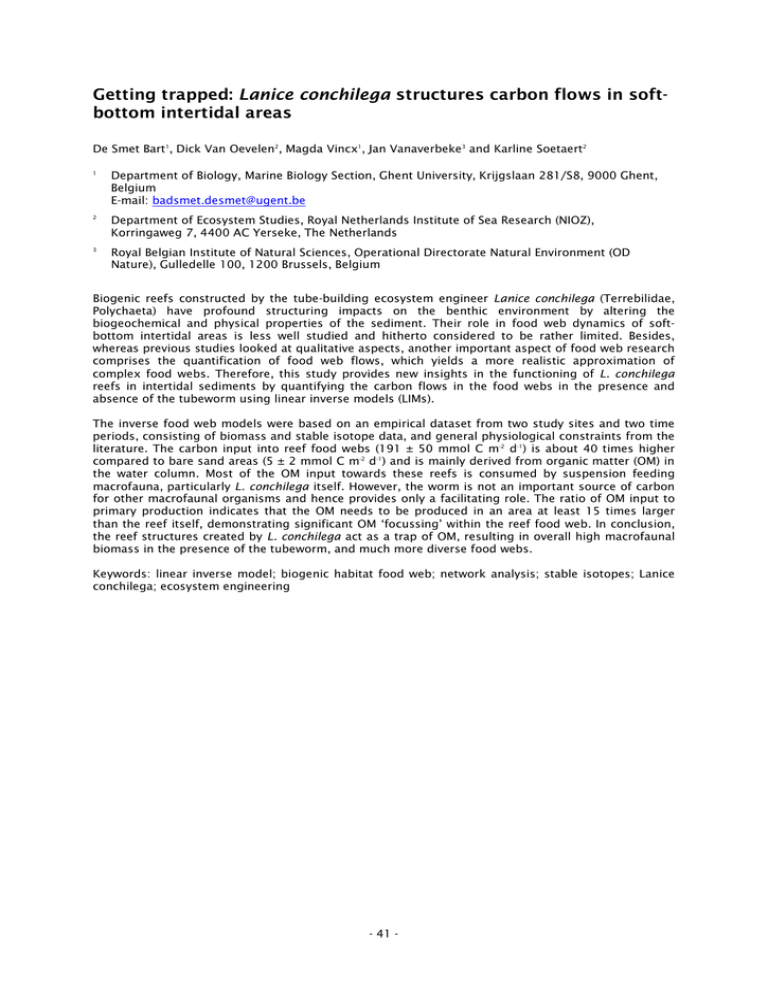
Getting trapped: Lanice conchilega structures carbon flows in softbottom intertidal areas De Smet Bart1, Dick Van Oevelen2, Magda Vincx1, Jan Vanaverbeke3 and Karline Soetaert2 1 Department of Biology, Marine Biology Section, Ghent University, Krijgslaan 281/S8, 9000 Ghent, Belgium E-mail: badsmet.desmet@ugent.be 2 Department of Ecosystem Studies, Royal Netherlands Institute of Sea Research (NIOZ), Korringaweg 7, 4400 AC Yerseke, The Netherlands 3 Royal Belgian Institute of Natural Sciences, Operational Directorate Natural Environment (OD Nature), Gulledelle 100, 1200 Brussels, Belgium Biogenic reefs constructed by the tube-building ecosystem engineer Lanice conchilega (Terrebilidae, Polychaeta) have profound structuring impacts on the benthic environment by altering the biogeochemical and physical properties of the sediment. Their role in food web dynamics of softbottom intertidal areas is less well studied and hitherto considered to be rather limited. Besides, whereas previous studies looked at qualitative aspects, another important aspect of food web research comprises the quantification of food web flows, which yields a more realistic approximation of complex food webs. Therefore, this study provides new insights in the functioning of L. conchilega reefs in intertidal sediments by quantifying the carbon flows in the food webs in the presence and absence of the tubeworm using linear inverse models (LIMs). The inverse food web models were based on an empirical dataset from two study sites and two time periods, consisting of biomass and stable isotope data, and general physiological constraints from the literature. The carbon input into reef food webs (191 ± 50 mmol C m-2 d-1) is about 40 times higher compared to bare sand areas (5 ± 2 mmol C m-2 d-1) and is mainly derived from organic matter (OM) in the water column. Most of the OM input towards these reefs is consumed by suspension feeding macrofauna, particularly L. conchilega itself. However, the worm is not an important source of carbon for other macrofaunal organisms and hence provides only a facilitating role. The ratio of OM input to primary production indicates that the OM needs to be produced in an area at least 15 times larger than the reef itself, demonstrating significant OM ‘focussing’ within the reef food web. In conclusion, the reef structures created by L. conchilega act as a trap of OM, resulting in overall high macrofaunal biomass in the presence of the tubeworm, and much more diverse food webs. Keywords: linear inverse model; biogenic habitat food web; network analysis; stable isotopes; Lanice conchilega; ecosystem engineering - 41 -
